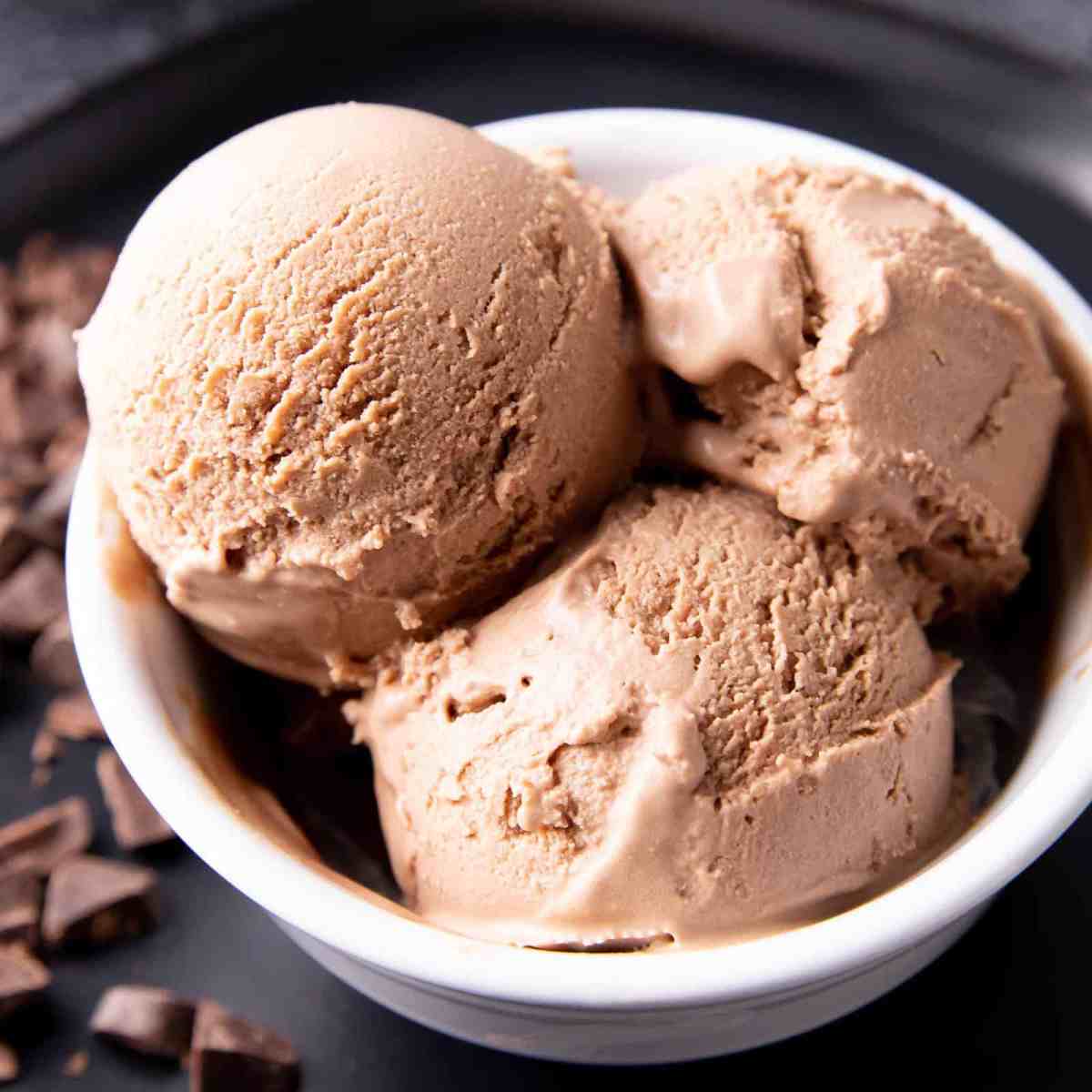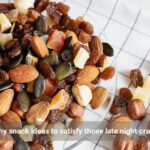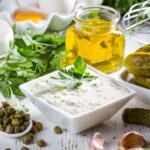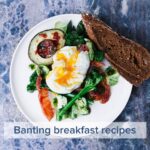Embark on a culinary journey that redefines the Banting diet. Imagine vibrant, flavorful meals bursting with fresh ingredients, all while adhering to the core principles of Banting without relying on added oils. This exploration delves into the art of oil-free Banting, revealing how to create satisfying and nutritious dishes that support your health goals. Discover the surprising depth of flavor achievable without compromising texture or taste, unlocking a cleaner, healthier approach to this popular dietary lifestyle.
This guide unveils the secrets to mastering oil-free Banting cooking. We’ll explore essential ingredients, innovative cooking techniques, and delicious, step-by-step recipes to transform your meals. Learn how to substitute oils effectively, achieving the perfect texture and taste in every dish. From hearty main courses to delectable desserts, we’ll empower you to create a diverse and satisfying oil-free Banting menu that nourishes your body and delights your senses. Prepare to experience a revitalized approach to healthy eating.
Essential Ingredients for Oil-Free Banting Cooking

Embarking on an oil-free Banting journey requires a shift in culinary perspective, focusing on nutrient-dense ingredients that deliver flavor and satiety without relying on added fats. This approach prioritizes lean protein sources, ample non-starchy vegetables, and carefully selected healthy fats in moderation, all while adhering to the low-carbohydrate principles of the Banting diet.
The exclusion of oils, even healthy ones like coconut or avocado oil, is a key differentiator in this stricter variation of the Banting diet. While these oils offer certain nutritional benefits, the oil-free approach aims for a more minimalist and potentially even more effective method of achieving Banting goals.
Key Ingredients in Oil-Free Banting
The success of oil-free Banting hinges on understanding which ingredients provide both flavor and the necessary nutrients without added oils. The following table highlights five key ingredients commonly used.
| Ingredient | Description | Nutritional Benefits (Banting Context) | Example Uses |
|---|---|---|---|
| Bone Broth | A rich, flavorful liquid made by simmering animal bones. | High in collagen, gelatin, and minerals; supports gut health and satiety. Provides flavor without added calories or carbohydrates. | Soups, stews, sauces, as a base for cooking vegetables. |
| Unsweetened Applesauce | Pureed apples, without added sugar or oil. | Provides natural sweetness and moisture to baked goods. Contains fiber. | Baking cakes, muffins, and other desserts; adding moisture to meatloaf. |
| Avocado (used sparingly) | A creamy fruit rich in healthy monounsaturated fats. | Provides healthy fats and fiber, but should be used sparingly in oil-free Banting due to its fat content. | Guacamole (small portions), mashed into salads, or as a spread (in moderation). |
| Coconut Milk (full-fat, sparingly) | The creamy liquid extracted from coconuts. | Adds richness and creaminess to dishes, but contains saturated fat, so it is used sparingly. | Curries, soups, and sauces (use in small quantities). |
| Unsalted Butter (in minimal amounts) | Clarified butter, with water and milk solids removed. | Provides a small amount of fat and flavor, but its use is limited in this approach. | Used sparingly for sautéing or as a finishing touch on certain dishes. |
Comparison of Avoided Healthy Fats
Coconut oil and avocado oil, while often lauded for their health benefits, are excluded from strict oil-free Banting due to their high fat content. Even though these fats are considered healthier than others, the oil-free approach prioritizes minimizing all added fats to maximize weight loss and metabolic benefits. The exclusion isn’t about demonizing these oils; it’s about a more stringent adherence to the core principles of the diet.
Oil Substitutes in Cooking Methods
Sautéing can be achieved using bone broth or water in a pan with high heat. For baking, unsweetened applesauce, mashed avocado (in very small amounts), or pureed vegetables can add moisture and binding properties. Experimentation is key to finding the right balance of flavors and textures.
Sample Oil-Free Banting Recipes
These recipes demonstrate the delicious possibilities of oil-free Banting cooking. By focusing on flavorful ingredients and clever cooking techniques, we can achieve satisfying textures and rich tastes without relying on added oils. Each recipe offers a unique culinary experience, showcasing the versatility of this approach.
Chicken and Vegetable Stir-Fry
This vibrant stir-fry is a quick and easy weeknight meal, packed with protein and low-carb vegetables. The absence of oil results in a lighter, less greasy dish that still delivers satisfying flavor.
- Dice 1 lb boneless, skinless chicken breast into bite-sized pieces.
- In a large skillet or wok, heat over medium-high heat. Add 1 cup chopped broccoli florets, 1 cup sliced bell peppers (any color), and 1/2 cup sliced mushrooms. Stir-fry for 5-7 minutes until vegetables are tender-crisp.
- Add the chicken to the skillet and cook until browned and cooked through, approximately 5-7 minutes.
- In a small bowl, whisk together 2 tablespoons of low-sodium soy sauce, 1 tablespoon of rice vinegar, 1 teaspoon of sesame oil (optional, for a subtle flavor boost), and 1 teaspoon of ginger.
- Pour the sauce over the chicken and vegetables. Toss to coat and cook for another minute until the sauce thickens slightly.
- Serve immediately over a bed of cauliflower rice or shredded cabbage.
Roasted Asparagus with Lemon and Garlic
This simple side dish showcases the natural sweetness of asparagus, enhanced by bright lemon and pungent garlic. Roasting without oil creates a tender-crisp texture that is both appealing and healthy. Imagine the spears, vibrant green, slightly charred at the tips, exuding a delicate aroma.
- Preheat your oven to 400°F (200°C).
- Wash and trim 1 pound of asparagus spears.
- In a large bowl, toss the asparagus with 2 cloves of minced garlic, the zest and juice of 1 lemon, and a pinch of salt and pepper.
- Spread the asparagus in a single layer on a baking sheet lined with parchment paper.
- Roast for 12-15 minutes, or until tender-crisp and slightly browned.
Coconut Flour Pancakes
These fluffy pancakes are a delightful oil-free Banting dessert. The coconut flour creates a naturally moist and slightly sweet texture, reminiscent of traditional pancakes but without the guilt. Picture these golden brown discs, stacked high on a plate, subtly fragrant with coconut.
- In a large bowl, whisk together 1 cup coconut flour, 1 teaspoon baking powder, 1/2 teaspoon salt, and 1/4 cup sweetener (e.g., erythritol or stevia).
- In a separate bowl, whisk together 2 large eggs, 1 cup unsweetened almond milk, and 1 teaspoon vanilla extract.
- Pour the wet ingredients into the dry ingredients and whisk until just combined. Do not overmix.
- Heat a lightly oiled non-stick skillet or griddle over medium heat (a very light coating of coconut oil can be used for easier flipping if needed, but it’s optional).
- Pour 1/4 cup of batter onto the hot skillet for each pancake.
- Cook for 2-3 minutes per side, or until golden brown and cooked through.
- Serve warm with your favorite Banting-friendly toppings, such as berries or sugar-free syrup.
Nutritional Information
| Recipe Name | Calories (approx.) | Protein (grams) | Net Carbs (grams) |
|---|---|---|---|
| Chicken and Vegetable Stir-Fry | 350 | 40 | 10 |
| Roasted Asparagus with Lemon and Garlic | 50 | 3 | 4 |
| Coconut Flour Pancakes (per pancake) | 75 | 3 | 5 |
Advanced Oil-Free Banting Techniques
Mastering oil-free Banting cooking requires understanding specific techniques to achieve desirable textures and flavors without relying on fats for richness and moisture. This section explores advanced methods and problem-solving strategies to elevate your oil-free Banting culinary skills. These techniques focus on maximizing the natural flavors of ingredients and employing clever methods to prevent sticking and dryness.
Oil-Free Cooking Methods
Employing the right cooking method is crucial for success in oil-free Banting. Incorrect methods can lead to dry, tough, or unappetizing dishes. The following three techniques offer diverse approaches to preparing delicious, healthy meals.
- Steaming: Steaming is a gentle cooking method that preserves nutrients and moisture, ideal for delicate vegetables and fish. The food is cooked indirectly by the steam generated from boiling water, ensuring a moist and tender result. For example, steaming broccoli florets maintains their vibrant green color and crisp-tender texture, while steaming a cod fillet yields flaky, moist, and easily digestible fish. A steamer basket placed over a pot of simmering water is the essential equipment. Ensure the water level remains above the basket to prevent the food from drying out.
- Sautéing with Broth: Instead of oil, utilize a small amount of low-carb broth (bone broth, chicken broth, or vegetable broth) to sauté vegetables or protein. This method adds flavor and moisture while preventing sticking. For example, sautéing sliced mushrooms and onions in chicken broth creates a flavorful base for a Banting stir-fry. The broth’s liquid helps to create a slight browning effect on the vegetables, adding depth of flavor. A non-stick pan is recommended to further minimize sticking.
- Baking with Liquid: Baking without oil necessitates incorporating sufficient liquid to maintain moisture. This technique is particularly effective for meat and vegetable dishes. For example, baking a chicken breast with a mixture of bone broth and herbs will result in a juicy and flavorful chicken, while baking a cauliflower “mash” with unsweetened almond milk creates a creamy, satisfying texture. A baking dish or roasting pan is essential, and covering the dish with foil can prevent the surface from drying out too quickly.
Addressing Challenges in Oil-Free Banting
Oil-free Banting presents some unique challenges, but these can be effectively addressed with careful planning and execution.
- Preventing Sticking: Using non-stick cookware is crucial. Additionally, ensure your pan is properly heated before adding ingredients, and avoid overcrowding the pan. Adding a small amount of liquid, such as broth or water, to the pan can also help prevent sticking.
- Achieving Desired Textures: Achieving desired textures requires careful attention to cooking times and methods. Overcooking can lead to dry or tough results, while undercooking may leave food raw or under-seasoned. Experimenting with different cooking techniques and monitoring the food closely are key to success. For example, for tender vegetables, steaming is ideal; for a crispy exterior on chicken, baking at a higher temperature is recommended.
Oil-Free Banting Chicken and Vegetable Bake
This recipe demonstrates the principles of oil-free Banting cooking, incorporating multiple techniques to create a flavorful and satisfying meal.
Ingredients:
- 1.5 lbs boneless, skinless chicken breasts, cut into 1-inch cubes
- 1 large onion, chopped
- 2 cups broccoli florets
- 1 cup sliced mushrooms
- 1 cup chopped bell peppers (any color)
- 1 cup chicken broth
- 2 tbsp lemon juice
- 1 tbsp dried herbs (such as thyme, rosemary, oregano)
- Salt and pepper to taste
Equipment:
- Large oven-safe skillet or baking dish
- Cutting board
- Knife
- Measuring cups and spoons
Instructions:
- Preheat oven to 375°F (190°C).
- In the oven-safe skillet, combine the chopped onion, broccoli, mushrooms, and bell peppers.
- Pour the chicken broth over the vegetables, ensuring they are slightly moistened.
- Add the chicken cubes, lemon juice, dried herbs, salt, and pepper. Stir gently to combine.
- Cover the skillet with a lid or aluminum foil.
- Bake for 30-40 minutes, or until the chicken is cooked through and the vegetables are tender. Check halfway through and stir gently to ensure even cooking.
- Remove from oven and serve hot.
By embracing oil-free Banting, you’re not just eliminating a single ingredient; you’re embarking on a transformative culinary adventure. This approach unlocks a new world of flavor and texture, proving that healthy eating doesn’t have to be bland or restrictive. The recipes and techniques presented here are a starting point—a springboard to your own creative exploration of this unique dietary style. So, embrace the challenge, experiment with new flavors, and savor the journey to a cleaner, healthier you. The rewards of a vibrant, oil-free Banting lifestyle await.
Frequently Asked Questions
What are the potential drawbacks of an oil-free Banting diet?
Potential drawbacks include difficulty achieving certain textures (e.g., crispy skin on meats), needing to adjust cooking times, and potentially needing to increase the intake of other healthy fats to compensate.
Can I use any type of fat-free cooking spray?
Not all fat-free sprays are suitable for Banting. Check the ingredients to ensure they align with your dietary goals. Many contain additives that are not Banting-friendly.
How do I ensure I’m getting enough essential fatty acids on an oil-free Banting diet?
Focus on foods naturally rich in healthy fats like avocados, nuts, and seeds, but always ensure you’re meeting your daily nutritional requirements by consulting with a nutritionist.
Is it possible to maintain an oil-free Banting diet long-term?
Yes, with careful planning and a commitment to finding creative solutions and diverse recipes. It’s important to ensure nutritional balance and variety.


